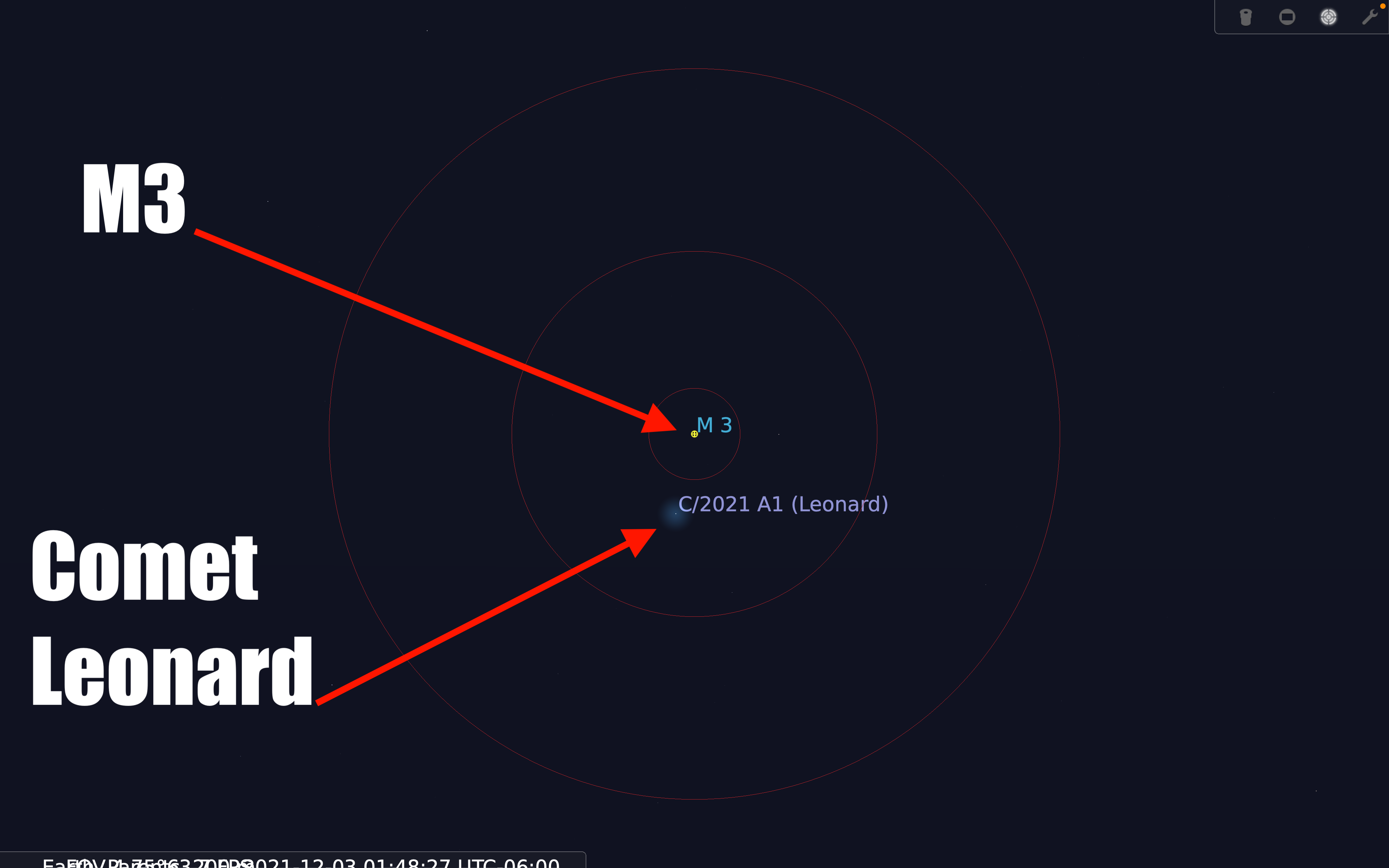
This week in What’s Up is not another moon phase or meteor shower, but a comet — specifically Comet C/2021 A1 Leonard.
If you remember last spring’s Comet C/2021 F3 NEOWISE, this comet will be like a slightly fainter sibling as it nears unaided visibility and becomes an easy binocular or small telescope object as it gets closer.
To find it this week, look between the end of the handle of the Big Dipper asterism towards the bright star Arcturus, or as they’d say in a planetarium, arc to Arcturus. Comet Leonard will be in between the last handle star and Arcturus. As the days go on, it will continue heading horizonward. Tomorrow, December 3 in the morning UTC, the comet will be less than a degree from Messier 3, a bright globular cluster in the constellation Canes Venatici.
A Telrad finder sight can help you find the comet and many other objects using the concept of star hopping, going from one bright star to other dimmer stars so you can find your deep-sky target. The Telrad has a reticle with circles at half a degree, two degrees, and four degrees, illuminated by a red light so you won’t lose your night adaptation. It’s simple to attach to your telescope, using an adhesive base. You can get more bases to use the same Telrad on different telescopes. You can get a Telrad sight from Amazon and support citizen science by using the Amazon affiliate link in the show notes for this episode.
To track this comet through the sky over the next year, you can use the free astronomy software Stellarium. This is a powerful tool for planning observing sessions, and it includes plugins for plotting different objects, from asteroids to satellites. You need to point the software at an updated source of orbital elements since this is a new comet, and Stellarium makes this a simple process. The details will be at a link on our show notes. Stellarium has a mode that projects the three rings of a Telrad sight on the simulation, so you can determine what way you need to move your scope and by how much to find objects.
The comet is going very fast, over 250,000 km/h; however, it doesn’t look like it’s going fast because it is very far away. Once you find it, make a note of where it is. After ten minutes or so, look at the position of the comet again. There should be a noticeable difference in position.
Comet Leonard was discovered by astronomer Alan Leonard on January 3, 2021, using the 1.5-meter Cassegrain telescope at the Mt. Lemmon Observatory north of Tucson, Arizona. Currently, it is visible in the northern hemisphere in the morning, through a telescope only since it’s at magnitude 10, but in early December, it will become visible in the evening sky and will brighten to unaided eye visibility, at about magnitude 4. Its closest approach to Earth is on December 12, and it will reach its brightest at Periapsis on January 3, 2022.
Comet Leonard is what’s known as a long period comet, with an orbit of about 80,000 years according to NASA’s Jet Propulsion Laboratory. It’s spent the last 35,000 years heading back into the solar system from the furthest point in its orbit, about 3,700 times the distance from the Earth to the Sun. Its periapsis, or closest point of its orbit around the Sun, is about halfway between the Earth and the Sun. This will be its final approach to the Sun, as the energy it gets from the approach will accelerate it beyond solar system escape velocity. Over the next few thousand years it will head back out of the solar system, never to return. This is truly a once-in-a-lifetime opportunity.




 Join the Crew!
Join the Crew!
 Escape Velocity Space News
Escape Velocity Space News
0 Comments